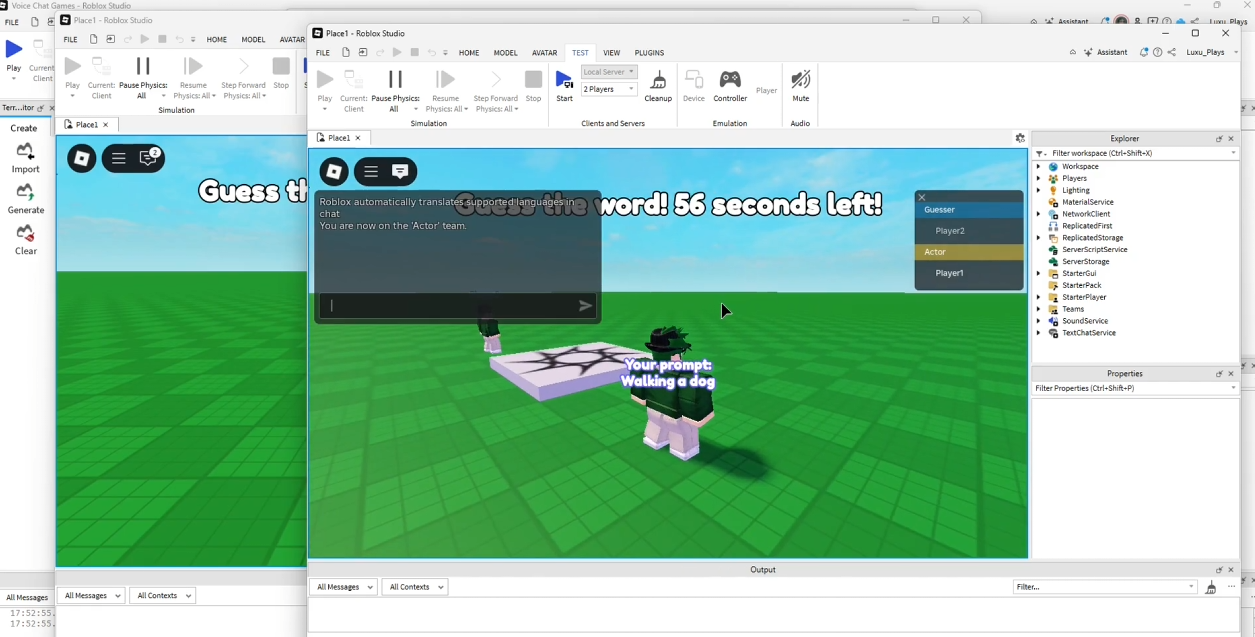Roblox Voice Chat Game Prototype
This is a roblox game I attempted to make within a 7 day period. It was a personal "game-jam" to see how far I could get in one week. The game is essentially just a charades type of game using Roblox's voice chat.

Process
This project was a self-imposed 7-day game jam to push my rapid prototyping and systems design skills in Roblox Studio. I set out to create a simple, voice-chat-driven charades game, scoped intentionally small so I could focus on getting a complete gameplay loop functioning within a tight timeframe.
By day three, I had the core loop working: the game assigned roles (actor and guessers), gave the actor a random prompt, and used chat parsing to detect correct guesses. However, I quickly hit a wall—small changes to the codebase started causing major bugs in the game's flow. I realized I needed a more maintainable architecture.
That's when I discovered and implemented a finite state machine (FSM) using a library I found via Wally (Roblox's package manager), integrating it into my project with Rojo and Visual Studio Code. I refactored the entire game loop using this FSM architecture, which allowed for a much cleaner and more modular design.
Although the prototype was mostly functional by day seven, I decided to continue developing it beyond the original jam. I sketched out a flowchart to expand the state machine, enabling future minigames like voice-based karaoke or a building game where one player builds an object with "minecraft-like" blocks and others guess what it is.

What I learned
This project taught me the importance of scoping and structure in game development. Working within a strict 7-day limit forced me to focus on the essentials—getting a playable loop up and running quickly without getting bogged down in features or polish. It was a great exercise in prioritization and learning how to iterate under pressure.
One of the most significant takeaways was how fragile game systems can be without a solid architecture. Early on, small tweaks to the logic would break entire rounds, revealing just how interconnected and brittle my original setup was. This led me to explore finite state machines, and I ended up integrating one into my project. Refactoring the codebase into a clean FSM made the logic not only more stable but far easier to expand.
This was also my first experience building a Roblox game outside of Studio's built-in editor. Using VSCode, Rojo, and Wally gave me access to a more robust and modular workflow that I now rely on for all my Roblox projects. Finally, by sketching out a scalable flowchart and planning future minigames, I learned how important it is to think beyond the prototype and build systems that can grow alongside your ideas.